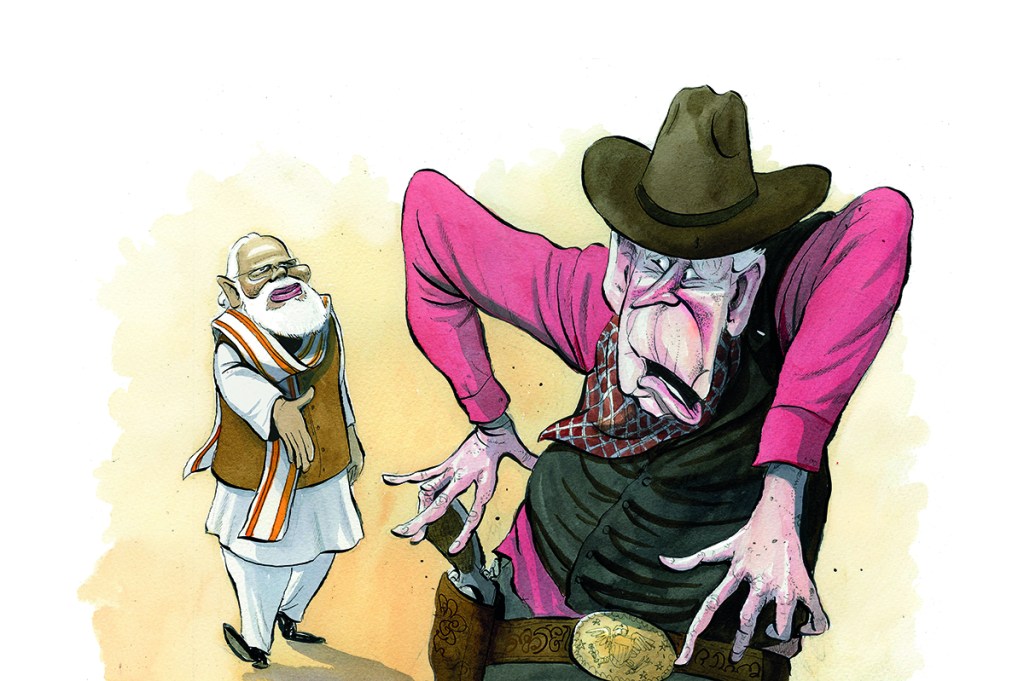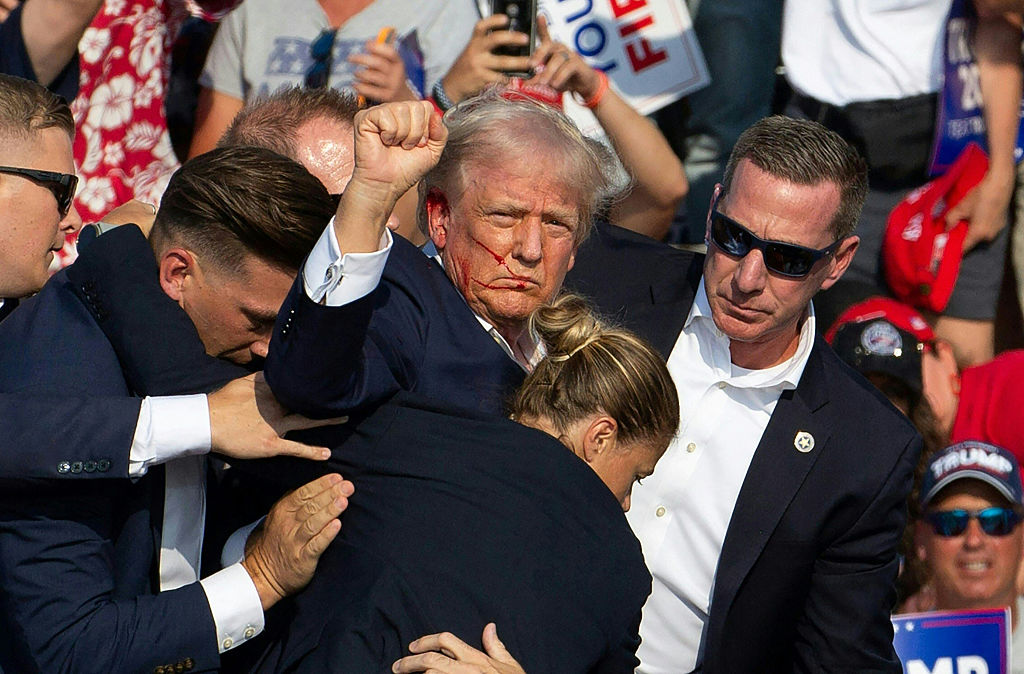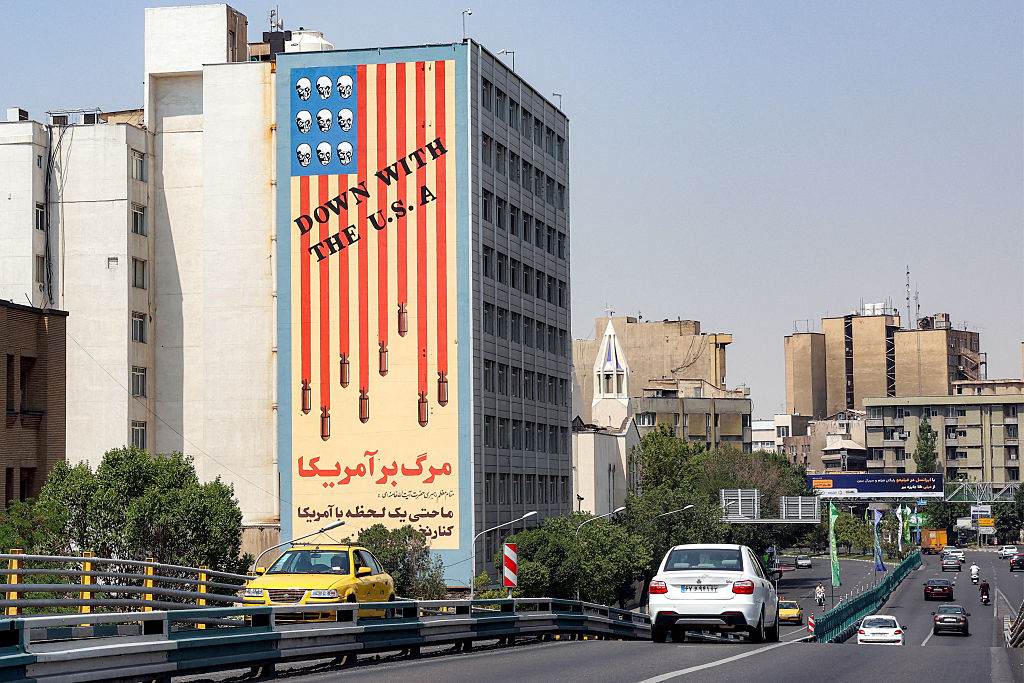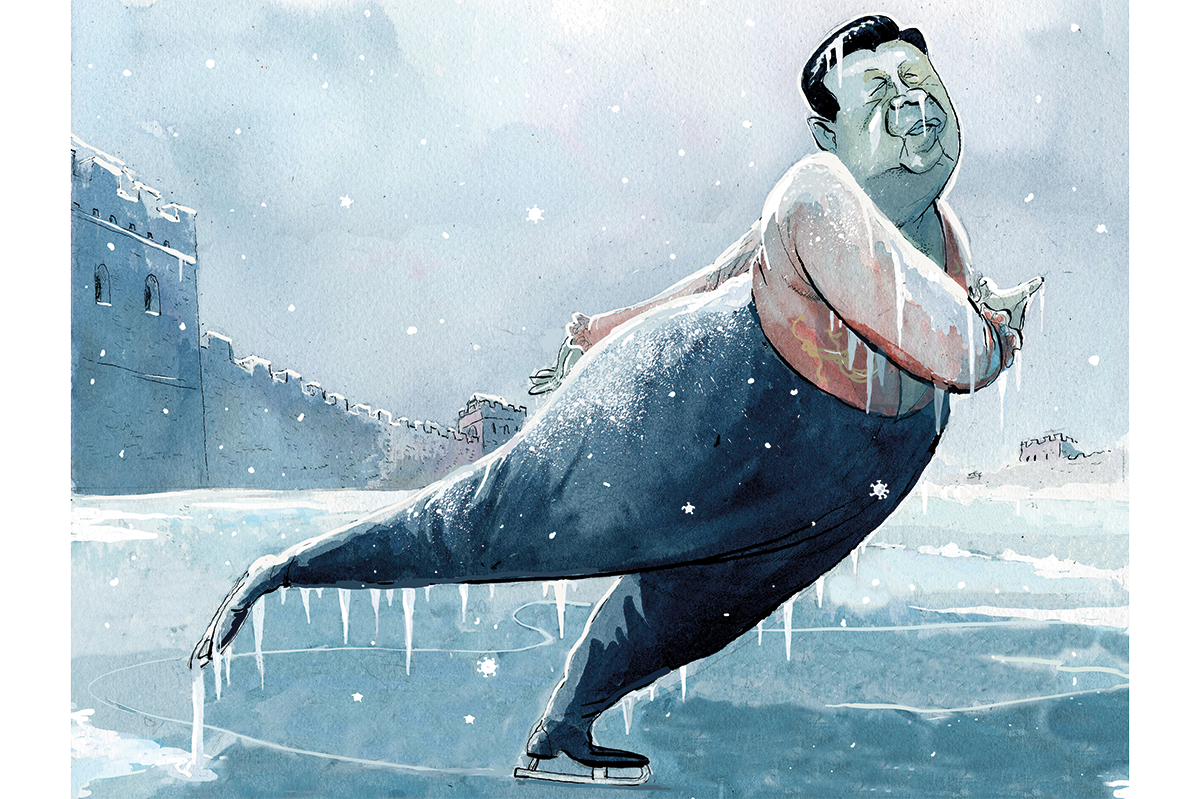The world’s center of gravity is shifting to the Indo-Pacific. The new global order will be shaped by developments in a sprawling region where interstate rivalries and tensions are sharpening geopolitical risks. Building a stable balance of power in the Indo-Pacific has become more important than ever, but China’s territorial and maritime revisionism, and its heavy-handed use of economic and military power, are causing instability and undercutting international norms.
Against this background, the expanding strategic partnership between the world’s most powerful and most populous democracies — the United States and India — has become pivotal to equilibrium in the Indo-Pacific. With India’s closer integration, the four-nation Quad — Australia, India, Japan and the US — is blossoming as a strategic coalition of the leading Indo-Pacific democracies.
The Quad is central to the US’s “free and open Indo-Pacific” strategy. As American preeminence erodes, the US must augment its power with that of allies and partners. China’s foreign minister Wang Yi famously mocked the Quad in 2018 as a “headline-grabbing idea” that will dissipate “like the sea foam in the Pacific or Indian Ocean.” Instead, and thanks to China’s expansionist policies, the Quad continues to gain strength — despite the new, US-initiated AUKUS alliance with Australia and Britain. The US cannot build an Asian power equilibrium without India, Japan and Australia — and they cannot build it without the US.
Today, the US is also close to achieving a long-sought goal: a “soft alliance” with India that needs no treaty. The US has already emerged as the largest arms seller to India, leaving its traditional supplier, Russia, far behind. US defense transactions with India went from near zero in 2008 to over $20 billion in 2020. Furthermore, India has signed the four “foundational” agreements that the US maintains with all its close defense partners. These accords range from providing reciprocal access to each other’s military facilities and securing military communications to sharing geospatial data from airborne and satellite sensors.
India, a founder and leader of the Nonaligned Movement that sought to chart a neutral course in the US-Soviet rivalry during the Cold War, now makes little mention of nonalignment. Instead, it is multi-aligned and building close partnerships with democratic powers from Asia to Europe. India now holds more annual military exercises with America than any other country.
The main driver of the growing US-India strategic collaboration is China’s neo-imperial expansionism. President Xi Jinping believes that China has a narrow window of strategic opportunity to modify the international order in its favor before it confronts a demographic crisis, stalled economic growth and an unfavorable global environment. Accordingly, Xi has shown an increasing appetite for taking major risks.
American and Indian strategic priorities regarding China are, however, not the same. The US has never considered fighting a land war against China. The primary American objective is non-military: to counter China’s geopolitical, economic and ideological challenges. By contrast, China poses a pressing military challenge for India. The spotlight on the Chinese threats against Taiwan has helped obscure China’s more serious military confrontation with India along the long Himalayan frontier — a confrontation that is still raging.
The US and India, however, are united by other shared strategic interests. These include the rule of law, respect for territorial integrity and sovereignty, freedom of navigation, peaceful dispute resolution and a rules-based Indo-Pacific free of coercion. The biggest challenge to all these principles comes from China.
In May 2020, a shocked India discovered that China had stealthily encroached on several key border areas in the northernmost Indian territory of Ladakh. The discovery led to the first deadly Chinese-Indian military clashes in the Himalayas since 1975, including China’s first combat deaths in over four decades. The Indian and Chinese militaries remain locked in multiple standoffs, and the steadily increasing introduction of new weapons and troops by both sides has amplified the risk of renewed border skirmishing, if not outright war. Xi has picked a border fight with India that China cannot win. A war between these two nuclear- armed demographic giants is likely to end in a bloody stalemate with heavy losses on both sides. This is not the only instance in which Xi’s aggressive policies have proved to be counterproductive.
For India, China’s territorial aggression proves the importance of building close strategic collaboration with the US and likeminded powers. India today seems more determined than ever to frustrate China’s ambition to achieve Asian hegemony. By locking horns with China in tense military standoffs despite the risk of a full-scale war, India has openly challenged Chinese capability and power in a way no other power has done in this century. Since 2020, when India let Australia join the annual Exercise Malabar war games with the American, Japanese and Indian navies, the Quad has possessed a platform for an annual military exercise involving all its members.
Xi must now also contend with the strengthening US-India relationship. In a pivot to Asia that much of the US media either ignored or derided, the Trump administration gave India pride of place in its Indo-Pacific strategy. It also instituted fundamental shifts in US policies on China and Pakistan, two close allies whose strengthening strategic axis in southern Asia imposes high security costs on India, including raising the specter of a two-front war. Trump reversed the forty-five-year US policy of aiding China’s rise; with bipartisan support, he designated China as a strategic rival and threat. His administration also cut off security aid to Pakistan for not severing its ties with terrorist groups.
Relations between the Indo-Pacific’s two largest democratic powers thrived during the Trump presidency. Trump built a personal rapport with India’s prime minister Narendra Modi, with whom he shares a love for big audiences and theatrics. Trump joined Modi’s September 2019 public rally in Houston, which was attended by 59,000 Indian Americans and a number of US congressmen and senators. Then, during his February 2020 standalone visit to India, Trump spoke at the largest rally any American president has ever addressed — at home or abroad.
More than 100,000 people packed the world’s largest cricket stadium, in Modi’s home state of Gujarat. “America loves India, America respects India, and America will always be faithful and loyal friends to the Indian people,” Trump declared. After returning home, Trump called India an “incredible country,” saying, “Our relationship with India is extraordinary right now.”
The US and India are both bitterly polarized democracies. In each, rival political forces are self-segregated into their own ideological silos. Trump and Modi have faced similar accusations from critics. Both are accused of being blinkered demagogues, of pursuing divisive policies and choosing populism over constitutionalism. Each consciously avoided saying anything that could give a handle to the other’s domestic critics.
President Biden, by contrast, entered the White House after criticizing Modi’s government on issues like Kashmir and a new Indian law on citizenship for non-Muslim refugees who had fled religious persecution in neighboring Islamic countries. Biden’s election victory created uncertainty over the future direction of US-India ties. Indeed, as a senator, Biden had spearheaded a congressional sanctions move in 1992 that helped block Russia’s sale of cryogenic-engine technology for India’s civilian space program, setting it back many years.
Yet President Biden has sustained the momentum in the growth of the bilateral relationship. As with tacit acceptances of Trump’s other unorthodox foreign-policy initiatives, Biden has no choice but to recognize India’s centrality in an Asian balance of power. Despite his party’s hostility to Modi and Hindu nationalism, Biden’s interactions with Modi have been characterized by ease and warmth. In September, Biden welcomed Modi to the White House as “my friend” and said, “I’ve long believed that the US-India relationship can help us solve an awful lot of global challenges.”
Booming US exports to India — one of the world’s fastest-growing markets —reinforce bipartisan support in Washington for a closer partnership with New Delhi. The US has rapidly become an important source of crude oil and petroleum products for India, which is the world’s third-largest oil consumer after the US and China. But the US and India are not entirely on the same page.
America’s self-inflicted defeat and humiliation in Afghanistan at the hands of a Pakistan-backed terrorist militia have compounded India’s security challenges at a time when it should be fully focused on countering China’s Himalayan expansionism. Worse still, Team Biden, unlike the Trump administration, has placed outreach to Beijing as a high priority, and has been wary of publicly supporting India against Chinese aggression. The Democrats’ Russia fixation, meanwhile, is only strengthening under Biden.
Nevertheless, India will continue to quietly gain greater salience in US policy — especially as Russia and China deepen their entente. Instead of driving a wedge between these two natural competitors, US policy has helped turn them into close strategic partners. If the US is not to accelerate its relative decline through strategic overreach, it needs India more than ever. It would be doubly ironic, given Vice President Kamala Harris’s Indian heritage, if Biden did not seize the opportunity to formalize the US’s de facto and deepening security alliance with India.
This article was originally published in The Spectator’s March 2022 World edition.

























